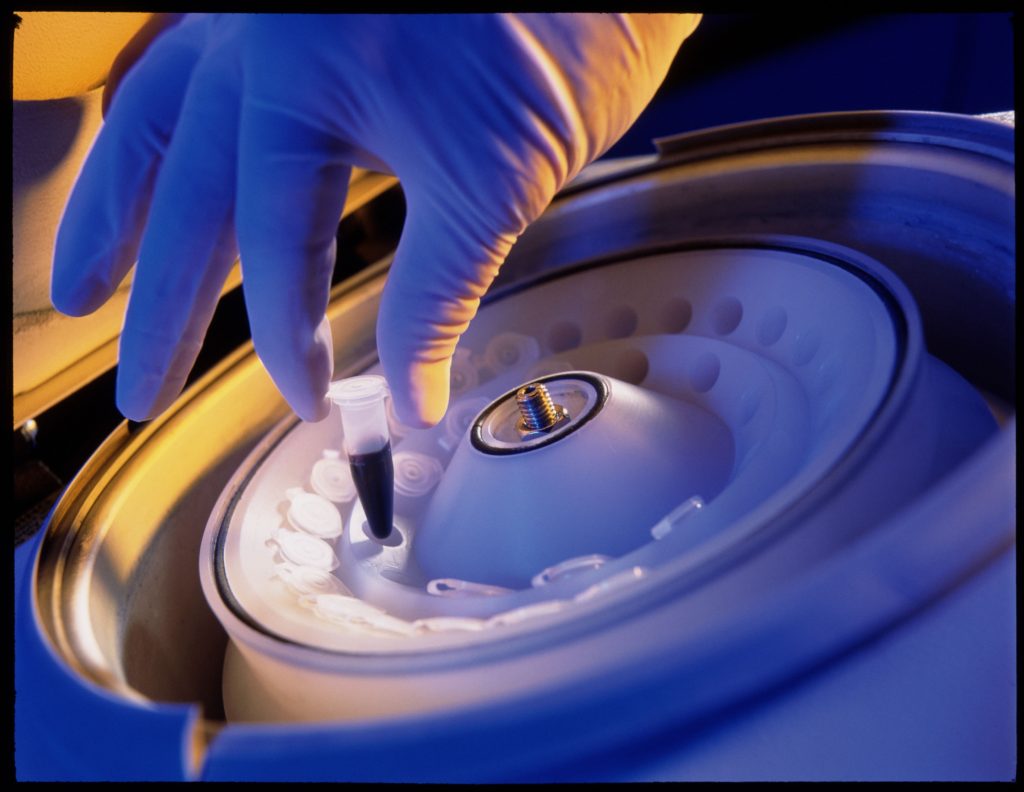There are two types of centrifugal techniques used to separate particles; differential centrifugation and density gradient centrifugation. Differential centrifugation is the simplest form of centrifugation. It is also known as pelleting. Particles of different sizes and densities are placed in suspension and sediment at different rates where the larger and denser particles sediment faster. The sedimentation rates can be increased by centrifugal force. Suspension of cells subjected to increasing centrifugal force yields to a series of pellets that contain cells of decreasing sedimentation rates.
During differential centrifugation, particles of different sizes or densities sediment at different rates .The largest and most dense particles will also sediment before the small and less dense particles. Differential pelleting is mostly used to harvest cells or to produce crude sub cellular from tissue homogenate. Performing centrifugation at a high centrifugal force will pellet particles of the next lower level such as mitochondria.
Due to heterogeneity in particles, differential centrifugation suffers from poor recoveries and contamination. Contamination can be addressed by repeating the centrifugation steps and resuspension. Purification can be done through equilibrium sedimentation where the desired layer is extracted for further analysis. When it comes to deferential centrifugation, there are a few common questions asked online on sites such as MyBioSource.com.
- What is a centrifuge? A centrifuge is a device or instrument used in research labs. It uses centrifugal force to spin samples at high speeds where the components of the samples are subjected to centrifugal force, causing the particles to sediment. The particles can remain at the bottom of the tube or remain mixed in the solution.
- What is equilibrium sedimentation? Equilibrium sedimentation is a function of particle density but in viscous liquids, the rate of sedimentation is also a function of particle size. This is because the centrifugal force on a particle is proportional to the particle diameter cubed while the force from viscous drag is proportional to the particle diameter cubed.
- What is in the pellet after sedimentation? When sediments settle at the bottom of the tube, they are known as pellet. The remaining solution is to be separated for further analysis.
- What issupernatant? Supernatant is also known as the pellet. It is the remaining solution in a tube after centrifugation.
- What is ultracentrifuge? Ultra centrifuge is a refrigerated low-pressure chamber that contains a rotor which is driven by an electric motor which is able to rotate at high speeds. Samples are placed on the rotor and a rotational speed is excreted. The speed causes sedimentation.
- What is sedimentation? Sedimentation is the process through which supernatant settles at the bottom of a tube.
- What is buoyant density ultracentrifugation? Buoyant density ultracentrifugation uses buoyancy to separate molecules in a solution.
- What is density gradient centrifugation? This is a procedure used for separating particles such as ribosome, molecules and viruses. The sample is placed on a preformed gradient and then upon centrifugation, the macromolecules are banded in the gradient.




